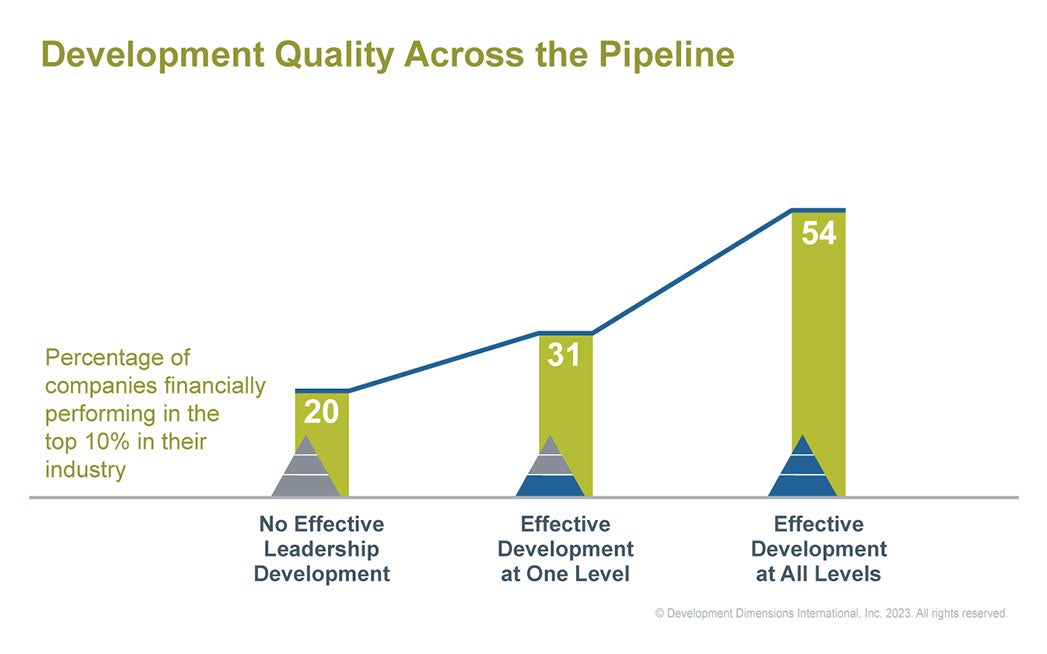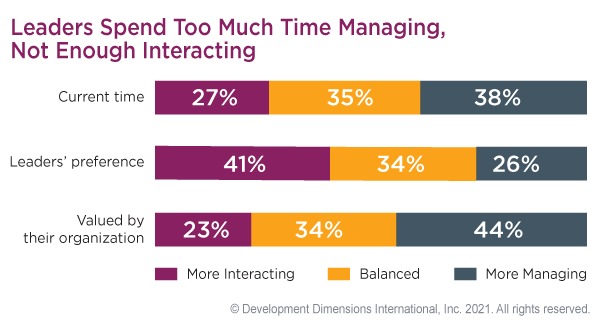Last month I was facilitating a leadership development course when I was asked a provocative question: “Why should I care about organizational and leadership culture?”
Before answering, I thought about how leadership culture significantly shapes a company's organizational culture. How leaders behave, communicate, and make decisions directly impacts the values, beliefs, and norms that define the culture within an organization. A strong organizational culture begins with effective leadership. Leaders who understand the importance of culture can create an environment where employees feel valued, empowered, and inspired.
In this blog, I’ll explore the connection between organizational and leadership culture. Plus, I’ll go through the ways to build a healthy leadership culture.
What Is Organizational Culture?
Organizational culture is the shared values, attitudes, beliefs, goals, and norms that collectively prescribe how to behave in the workplace. It’s how employees fit in, build relationships, and move agendas forward. It influences the company’s success in recruiting, engagement and retention, and performance. It’s also the big-picture answer to “how things get done around here.”
According to Tony Hsieh, former CEO of Zappos, “A company’s culture and a company’s brand are really just two sides of the same coin. What goes around the office comes around to the customer.”
Although you may think of culture as internal to your organization, in reality, it is on display during every customer interaction. Attitudes and behaviors shape the external customer experience, and potentially even your brand.
As such, organizational culture is always shifting and changing—both in response to what’s happening inside the company and what’s happening in the world. And leaders are important influencers in styling and evolving the culture to meet the needs of the organization and the customer.
Organizational culture is the big-picture answer to how things get done around here.
What Is Leadership Culture?
Leadership culture refers to shared beliefs and practices that shape how leaders act and are seen in an organization. It includes the behaviors and attitudes expected from leaders and the standards that guide their decisions and interactions.
A strong leadership culture values transparency, accountability, and inclusivity. This culture also focuses on how leaders grow their skills, mentor employees, and drive the organization toward its goals.
How Does Leadership Influence Company Culture?
Employees often report different experiences of organizational culture depending on their direct leader.
For example, I recently observed two teams from an organization. Both teams had the same purpose, goals, structure, and organizational values. But the workplace culture in each team was very different.
Members of one team were engaged in their work and supported each other emotionally. This healthy workplace culture had arisen in part because of the leader, who connects with each team member individually and cares for the wellbeing of the whole team.
The other team was regularly in conflict and did not have the same camaraderie, connectedness, or support. The leader of this team ignored conflicts between team members, which allowed conflicts to linger, and the dynamics of the entire team suffered as a result.
Two teams, in the same organization, with very different workplace cultures. So, what was the difference? The leader made all the difference.
Leaders play a key role to set and demonstrate behavioral standards and provide feedback and coaching to support team members.

But shaping culture is not the responsibility of frontline leaders alone. Senior leaders set the tone and identify values and behaviors that enable success and drive performance. These values and behaviors are a critical foundation for creating the desired culture. Leaders across the organization must demonstrate them to build the foundation and keep the organizational culture strong for the long term. Plus, when companies develop their leaders and create cohesive leadership cultures that span the entire organization, they see increasingly better financial returns.
5 Strategies to Build a Healthy Leadership Culture
In our 2023 Global Leadership Forecast (GLF) we identified five key strategies HR can implement to foster a healthy and high-quality leadership culture.

1. Developing leaders in critical skills
According to our research, there are five top skills leaders say they want to develop to be ready to meet upcoming challenges:
- Identifying and developing future talent
- Strategic thinking
- Managing successful change
- Decision-making prioritization
- Influencing others
Leaders with these skills can help their organizations weather challenging situations. What's more, the research also shows that when companies develop these skills in their leaders, they are 1.4X more likely to be named as a best place to work.

2. Using people-forward talent practices
Organizations that use people-forward talent practices focus on their employees’ growth. They create a supportive environment that encourages learning, skill building, and career advancement. These companies offer personalized career plans, mentorship programs, regular feedback, cross-team collaboration, stretch assignments, and ample training opportunities. And leaders are prepared with the skills and mindset to support this growth-focused culture and foster employee development.

3. Implementing a common leadership model
To create a consistent leadership language, help all your leaders develop the foundational skills to be effective. Based on decades of research, DDI has found again and again that these core skills are critical for successful leaders at all levels:
- Emotional intelligence
- Coaching and developing others
- Compelling communication
- Decision making
- Delegation and empowerment
- Execution
- Facilitating change
Leaders can learn and practice these skills, forming new behaviors, which can shape a team’s culture. When this behavior is reinforced and replicated across multiple teams, you have created a consistent leadership culture.

4. Offering development across the leadership pipeline
It’s tempting to focus development on first-time leaders who may seem to need it most. But strong leadership development spans all levels. Development should be customized based on the needs of each leadership level. For example, while all leaders need coaching skills, coaching styles should vary for frontline, mid-level, and emerging leaders. And while leaders should learn how to coach their direct reports, emerging leaders must learn to coach their peers first.
Personalized development at the leader level is key, but so is avoiding one-and-done learning events. High-quality development is continuous.

5. Promoting from within
According to our GLF research, leaders hired internally are successful 65% of the time, compared to 52% of external hires. In other words, hiring from within is 25% more likely to be successful than recruiting from outside.
Beyond individual success, there’s also a cumulative effect when companies focus on internal leadership promotions. Specifically, when internal hire success rates are high, organizations are 4.7X more likely to have high overall leadership quality.
When organizations successfully implement these strategies, their leadership quality is 42% higher than their peers. They are also 3.4X more likely to be rated a best place to work by leaders.
What Are the Most Common Mistakes to Avoid in a Leadership Culture?
Building or changing culture is difficult work. It requires leaders to emulate an organization’s stated values with their behavior and coach team members to do the same. Paying lip service isn’t enough.
Here are four of the most common mistakes I’ve seen companies make when trying to build an effective culture.
1. Prioritizing management over leadership.
When leaders prioritize management over leadership, they can become disconnected and inaccessible.

DDI’s GLF research found that leaders spend more time than they would like on management tasks and less time interacting with their teams. According to the research, leaders want to spend 1.5X more hours interacting with their team each day.
When leaders prioritize interactions with team members, they have more opportunities to support development, celebrate success, collaborate on tough problems, delegate effectively, and more. All these activities support common cultural values such as alignment, appreciation, trust, and teamwork.
2. Losing sight of the organization’s values and goals.
Leaders and employees are often very busy. They can become so absorbed in daily tasks that they lose sight of the bigger picture. When this happens, the organization's culture can become misaligned from the organization’s purpose and vision.
Organizations with a strong culture create an environment in which values are ubiquitous from day one. Leaders and employees are evaluated for cultural fit during the hiring process and organizational culture is introduced during orientation. Annual or quarterly goals at the individual or team level may even be aligned with the values and behaviors required to achieve them. An ongoing leadership development program can help frontline and mid-level leaders expand skills in areas that can help them promote healthy team, organizational, and leadership cultures.
3. Allowing negative or ineffective behaviors to persist.
Australian Chief of Army Lieutenant-General David Morrison is well known for his advocacy of gender equality and leadership in building equitable military culture. In the wake of an investigation uncovering misogynistic behavior by soldiers and officers, his three-minute address to his workforce has been frequently viewed and quoted for the specific phrase: “The standard you walk past is the standard you accept.”
In this speech, he called upon “…all of us, but especially…those that have a leadership role” to not let unacceptable practices go unchallenged. His powerful message rings true for leaders outside of military service as well.
It’s critical to set and communicate clear standards of behavior, and if team members do not live up to these standards, be clear and direct about the misaligned behavior. The bottom line? Clarity, feedback, and coaching are required to maintain and uphold your organizational culture. Looking the other way when behaviors violate company values is the first step in allowing those values to erode.
4. Inadvertently shifting workplace culture due to changing work models.
While employee demands for greater flexibility have led to a surge in hybrid work models, 2023 GLF research found that only 27% of leaders are effective at leading virtually. Leaders who feel ill-equipped to lead virtually may not be able to create a supportive hybrid workplace culture where employees can grow and avoid job burnout.
What behaviors are necessary for leaders to create a successful hybrid work culture? Our research found that these four leadership behaviors consistently stand out for driving higher levels of engagement:
- Maintains trust with employees.
- Encourages others to challenge old ways of doing things.
- Listens and responds with empathy (understanding others’ emotions).
- Provides opportunities for team members to gain visibility.
Effective Organizational and Leadership Culture Is a Differentiator
HR professionals and leaders at all levels are often drawn into reactionary roles, playing defense to protect the health of their areas or the bottom line. But proactively establishing and maintaining a healthy workplace and leadership culture is imperative for organizations to succeed. And this is true more today than ever before as employees prioritize culture when selecting their next job.
A study from Glassdoor suggests that a company’s culture may be of equal importance as other benefits. According to Christian Sutherland-Wong, Glassdoor President & COO, “Having a compelling mission, culture, and values are critical for attracting and retaining top talent in a competitive job market—it is what differentiates each and every employer.” Findings like these should signal to every organization that they need to invest in building a desirable culture now more than ever.
Learn how to build an inspiring organizational culture.
Stephanie Fergusson is managing consultant for DDI Australia. When she’s not busy leading client projects, you will most likely find her on a soccer, netball, or basketball sideline supporting her teenage children in their chosen sports.
Topics covered in this blog

